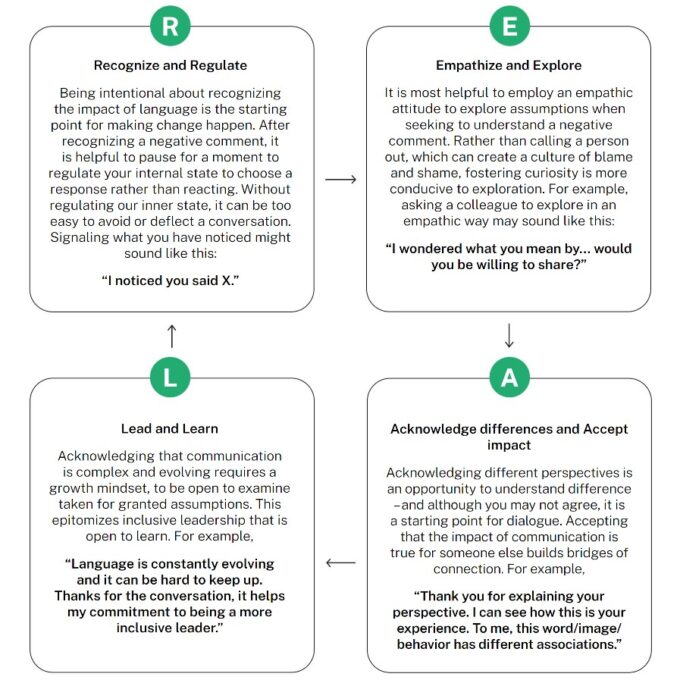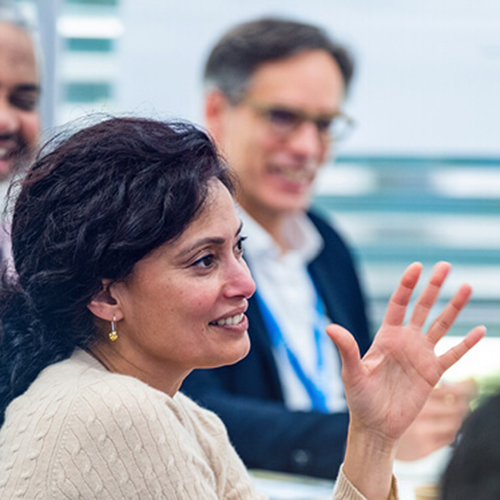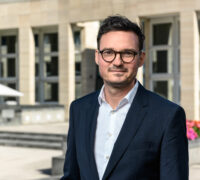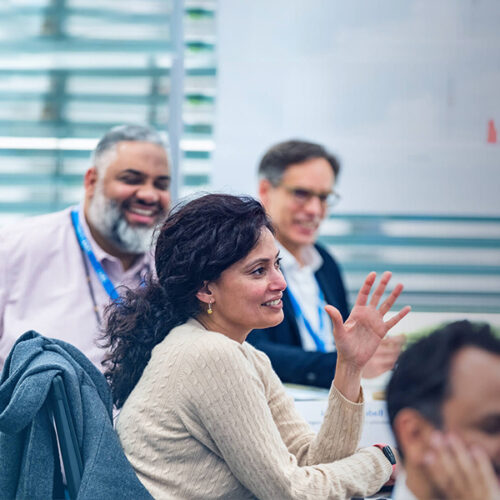As a leader, having ascended the corporate ladder thanks to your functional expertise and ability to mobilize and engage teams, you may be used to being regarded as highly competent. But if you want to be a truly inclusive leader, it’s important to admit that you don’t know it all, especially when it comes to inclusive communication, and to role model how to listen and challenge assumptions.
The very nature of language is that it is complex, constantly evolving, and full of nuance. What’s more, people may have their own preferences when it comes to how they want to be addressed. This means that leaders need to remain open, curious, and willing to seek different perspectives. Rather than shutting down a conversation because you are afraid of saying the wrong thing, your role is to open the discussion.
Like any cultural change, a broad commitment to creating a more inclusive organization must come from the top. Leading organizations create strategies for inclusive communication through a collective process that involves a broad and diverse spectrum of stakeholders and consultation with Employee Resource Groups (ERGs).
In many organizations, this often results in a comprehensive DE&I handbook for inclusive communication. While this is undoubtedly a useful toolkit and ensures consistency in both internal and external communications, it can sometimes be perceived as ‘too much’. As one DE&I expert in our scoping study commented: “The pitfall with inclusive language is that people see our handbook and they get scared talking about DE&I at all, as it can easily look overwhelming and difficult.”
The result is that when people hear non-inclusive language, they often choose to do nothing for fear of saying the wrong thing or getting involved in a challenging situation. Rather than avoiding discomfort, we suggest leaders use a four-step process to support conversations about the impact of language.
What to do when you hear or say something non-inclusive? Act R E A L
These steps are: Recognizing, Exploring, Acknowledging, and Learning. Although the steps follow a linear sequence in a conversation, REAL is an ongoing process of education that requires repetition, hence the circular visualization of these steps.










